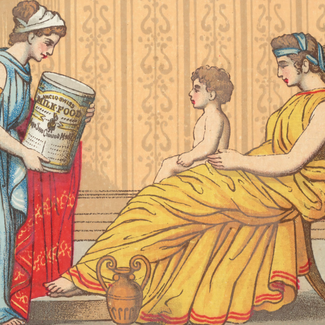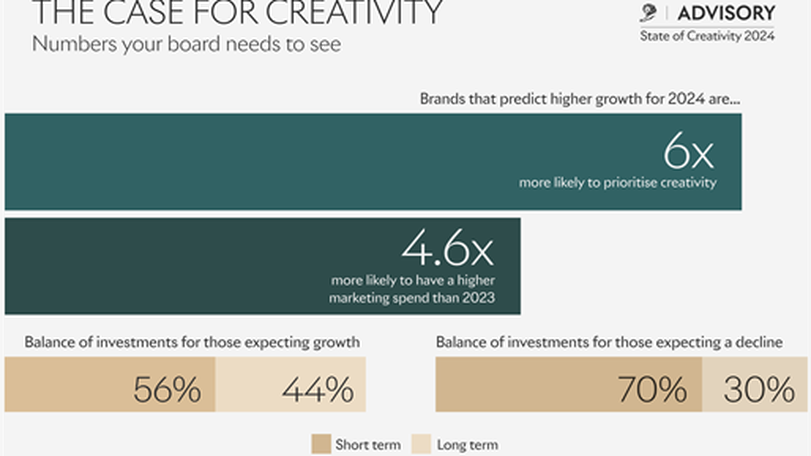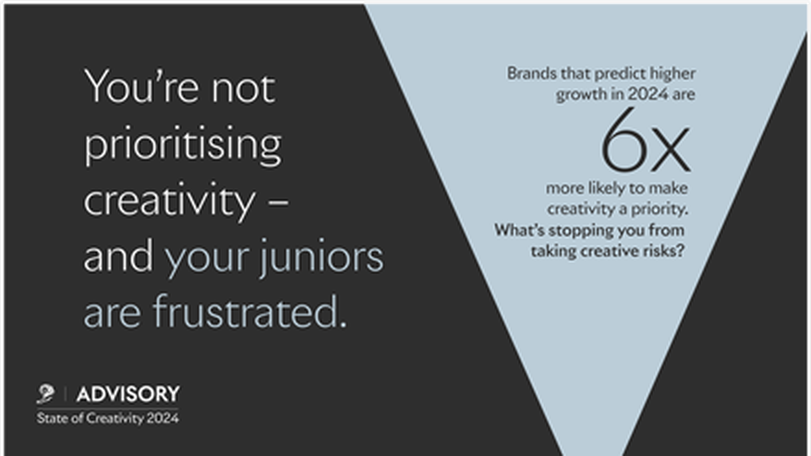
State Of Creativity: Communication Breakdown
Cannes Lions’ annual survey exposes strained relationships between clients and agencies, but presents a more optimistic outlook regarding growth and marketing investment
22 March 2024
Cannes Lions has released its annual ‘State of Creativity’ report entitled ‘Communication Breakdown On The Road To Recovery’. According to the report, businesses are promising growth and an increase in marketing investment, with 51 per cent of brand and agency respondents saying they anticipate stronger growth this year. However, the opportunity to capitalise on this with groundbreaking creative work might be at risk, with responses revealing two growing tensions driving a wedge between key creativity stakeholders.
First, there are glaring discrepancies in how brands experience the agency–client relationship compared to their agency partners. When asked about the partnership, brands expressed a more positive attitude towards it, while creative partners painted a starkly different picture. It suggests that brands are less in the know of the reality of their situation.
Also, marketers expressed frustration with the old guard of senior leadership who tend to be more "traditional and risk averse". Thanks to an absence of "creative marketers" at boardroom level, there is less scope to persuade execs to push boundaries with the creative work, according to the marketers surveyed for this report.
The report is an analysis of nearly 3000 global responses and some 1:1 conversations with industry leaders.
“This is a unique window into the global creative landscape, and what we’re seeing is that although the sentiment is outwardly optimistic, inwardly the industry is at odds,” Spencer Fox, SVP, business lead, advisory, Lions said. “There’s optimism around progress and investment, but tensions that need to be worked through if we’re going to realise the potential of creativity as a growth driver. Essentially, there’s a communication breakdown.”
Fox added: “Our findings show that brands predicting higher growth for 2024 are 6x more likely to prioritise creativity, are 4.6x more likely to have a higher marketing spend than 2023 and put more investment into brand building. It’s consistent evidence for the business case for creativity.”
Tension one: The client-agency relationship is under significant strain
While a lot of the Lion-winning work shows the crucial impact of a healthy client–agency partnership on the quality of creative output, the survey responses highlighted that the fabric of this relationship is wearing thin for nearly half of the agencies. Some 45 per cent of creative partners admitted that working efficiently with agency partners was “difficult”, as opposed to 37 per cent of brand-side professionals who find if “difficult” to work alongside agency partners.
The ‘State of Creativity’ report revealed that an easier (as opposed to difficult) client-agency relationship has a positive effect on the entire creative development process. Those companies that find it very easy to work efficiently as a client–agency partnership are: five times more likely to find it easier to understand the business problem to be solved, 13 times more likely to write a better creative brief, seven times more likely to find it easier to turn insight into ideas and four times more likely to find it easier to measure the impact of creative work.
Businesses that find it very easy to work efficiently as a client–agency partnership are 4.6 times more likely to predict better growth in 2024, while those that find it very difficult to work efficiently as a client-agency partnership are three times more likely to predict a decline in growth in 2024.
“Agency partnerships play a pivotal role in achieving successful brand building. A fact underscored by the strong relationships seen in the Cannes Lions winners over the years,” said Mustafa Shamseldin, category growth officer and CMO international foods PepsiCo.
Among the causes of this agency-client tension are feelings of frustration with alignment, trust and feeling undervalued. One anonymous creative director from Romania said: Clients consider us contractors, not partners,” while another creative director from the US added: “We have a very hard time working with external partners that don’t match our ambition. We go above and beyond to deliver creative and find that these partners tend to do the bare minimum to deliver.”
Cannes Lions affirms that for brand leaders to succeed in encouraging greater respect for agency partners they must conduct reverse appraisals, stay in close contact and remove barriers to collaboration. For agency leaders, it is advised they call for deeper communication and more curiosity.
“It’s the agency’s responsibility to go and ask as many questions as possible about their client’s business. This is what builds trust, as it helps you structure responses in a way that lands in future business plans.”
Tension two: Frustrated marketers point fingers at ‘play-it-safe’ leadership
Senior leadership was the second big target of criticism in the report. On the brand side, participants expressed difficulty in getting executives to embrace creativity – due, in part, to an absence of creative thinkers in the boardroom. More traditional, risk-averse marketers are taking up seats. So, although many people want to push the boundaries of their creative work, conservative leaders make them feel like they cannot. Junior and mid-level employees were particularly focused on this issue – and directors also raised it, meaning this is a more common problem.
The causes of tension were highlighted as:
Conservative leadership - Marketers want to experiment more with creativity but they feel their senior leadership present too many barriers. One junior brand manager from Ukraine is quoted as saying: “We’re open to new ways of showing our products to our potential and real customers, But sometimes our CEO wants our department to lower the level of creativity and use more common patterns.”
Lack of understanding: Even director-level respondents said their leaders do not fully understand the impact creative marketing can have on driving business success. A marketing director from Nigeria added: “The rigidity and lack of understanding of marketing and its impact on bottom line by business teams and leadership is our biggest challenge.”
Internal politics: A culture of internal politics came through as another challenger to creativity – an aspect people feel leadership should address better. “Creativity is coming out of the door less and less due to internal politics, client politics and mediocre leaders,” commented a creative director from Germany.
Cannes Lions highlights that Lion-winning brand leaders encourage unity with creative frameworks, competitions and collaboration programmes.
To read the full Lions ‘State of Creativity’ report click here.









